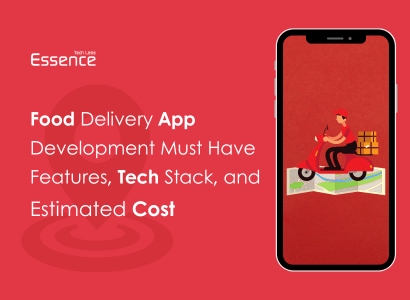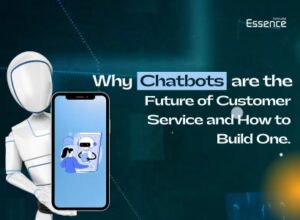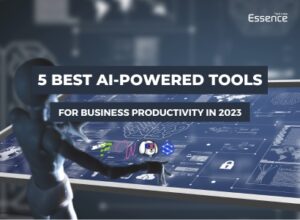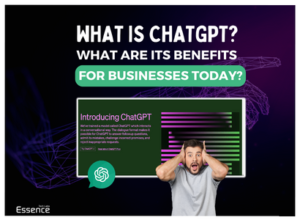
Food Delivery App Development Guide – Cost and Key Features
Food delivery applications have completely changed how we order and eat our favorite meals in today’s fast-paced world, where speed and convenience are essential.
Basically, food delivery applications have integrated seamlessly into our daily lives, whether for a relaxing evening at home, a hectic lunch break at work, or a weekend treat.
But have you ever thought about how these apps are created?
This blog post will discuss the complete food delivery app development guide cost and key features.
Food Delivery Industry in 2023
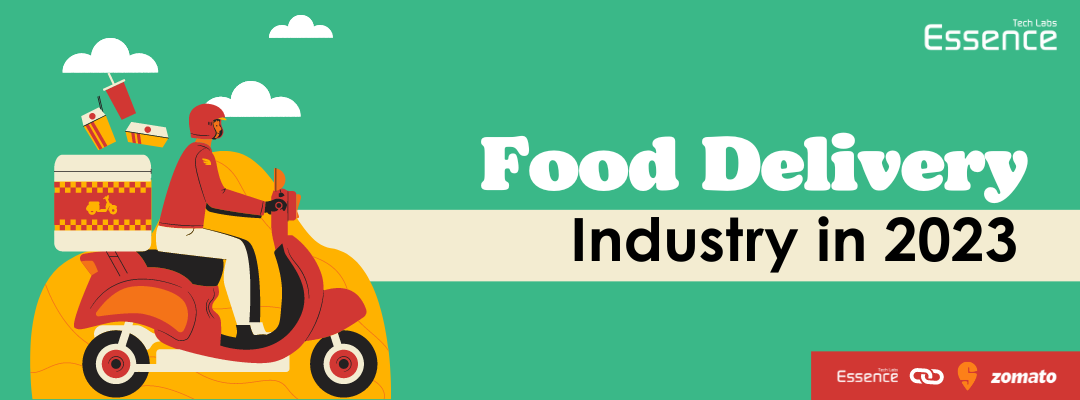
The food delivery sector has witnessed incredible growth and transformation in recent years, and its trajectory shows no indications of slowing down.
In fact, the sector has become even more dynamic, adaptive, and technologically advanced in order to meet the changing wants of consumers.
The growing popularity of ghost kitchens or virtual restaurants is a major development in the food delivery sector.
The best part of ghost kitchen is it has delivery-only businesses that do not have a physical storefront and only prepare meals for Internet orders.
Ghost kitchens allow entrepreneurs and established restaurant chains to reach a wider audience and experiment with new culinary concepts without the limits of a physical location.
The Future of the Food Delivery Sector
The food delivery industry has already seen enormous development and transformation, but the future holds even more intriguing possibilities. Looking ahead, numerous major trends and innovations are positioned to define the future of the food delivery industry.
One of the most noticeable changes is the rise of autonomous delivery. Companies are investing in self-driving cars and drones to revolutionize the last-mile delivery process. These technologies have the potential to improve delivery efficiency, lower costs, and provide faster and more dependable service. Consider having your food delivered to your door by a robot or a drone!
Some examples of food delivery apps
The most popular examples of well-known food delivery applications that have had a big impact on the sector include the following:
Uber Eats

A well-known international food delivery service, Uber Eats is available in many nations. Users are able to place online food orders from a variety of eateries, and the food is then delivered right to their door. Real-time tracking, individualized orders, and a selection of payment methods are all provided through the app.
Zomato
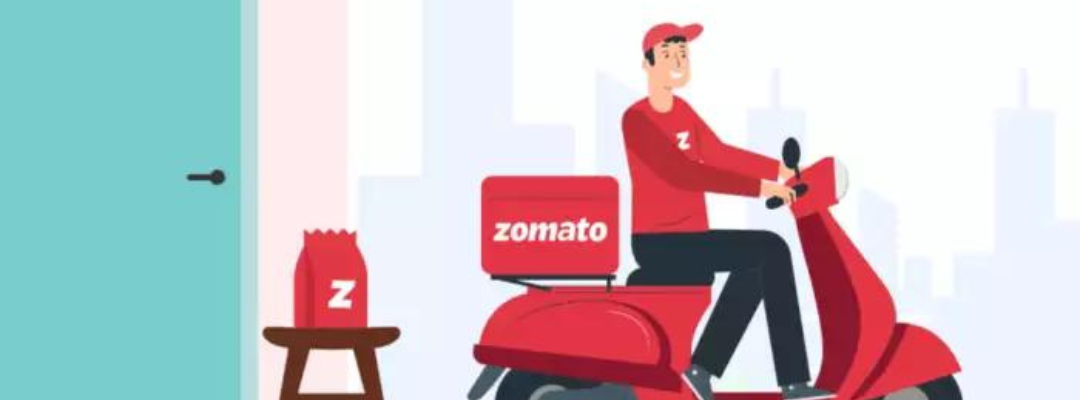
Zomato is a well-known platform for finding restaurants and ordering meals that run internationally. Users can browse menus, order delivery, and discover nearby eateries. In order to assist consumers in making knowledgeable decisions, Zomato also offers user reviews, ratings, and recommendations.
Swiggy

A well-known food delivery service with a focus on India is called Swiggy. It now has a huge following and a considerable influence in the Indian food delivery sector. Users can place meal orders from their preferred nearby restaurant’s thanks to Swiggy’s partnerships with a large number of eateries.
DoorDash
Another well-known food delivery app, DoorDash collaborates with neighborhood eateries to provide on-demand delivery services. A user-friendly interface, dependable delivery, and services like scheduled deliveries and group ordering are all offered. DashPass, a membership service from DoorDash that grants qualified orders unlimited free delivery, is also available.
Business Model
The following essential components are often at the center of the business models of food delivery apps:
Commision-based Revenue Model
Food delivery services that use a commission-based income model charge a fee for each order that is placed on their website. This commission is typically paid by the restaurant or other eating place and is calculated as a percentage of the order total.
Delivery charges
Some apps that deliver food to consumers also charge a delivery fee for each order. This fee aids in defraying delivery-related expenses such as driver salary, fuel costs, and administrative overheads.
Advertising and Promotions
Food delivery apps frequently make money by partnering with eateries, brands, and other companies to run advertisements and promotions. In their app, they might provide sponsored listings, featured placements, and targeted adverts to advertise particular restaurants or food items.
Subscription Plans
To encourage client loyalty and produce recurring revenue, many food delivery apps offer subscription programs. These membership services frequently provide advantages like limitless free deliveries, exclusive discounts, and access to promotions.
Feature of a Food Delivery App
The customer interface, the admin panel, and the delivery partner interface are the three key parts of a food delivery app. Let’s examine each’s salient characteristics:
Client Interaction:
- User Registration and Login: Users can register for an account, log in using their email address or a social media account, and manage their profile details.
- Restaurant Search and Menu Browsing: Customers may search for nearby restaurants, see menus, and browse through a variety of culinary selections with information like prices, descriptions, and photographs.
- Order placement: This step enables customers to choose goods from the menu, add extras and toppings to their orders, put items in their shopping carts, and finish the payment process.
- Secure Payment Options: Provides secure and practical payment options like credit/debit cards, digital wallets, or cash on delivery by integrating a number of payment gateways.
- Real-time Order Tracking: This feature enables clients to keep track of the status of their orders in real time, from preparation at the restaurant until delivery.
- Reviews & Ratings: Allows patrons to write comments, evaluations, and reviews for eateries and delivery services, assisting other users in making wise choices.
Admin Console:
- Restaurant Management: This feature enables administrators to manage restaurant partner accounts, such as onboarding, menu modifications, price, and availability.
- Order Management: This interface allows you to track and manage incoming orders, appoint delivery partners, and get order status updates.
- Analytics and reporting: Provides data-driven insights into important performance parameters like order volume, client preferences, and revenue creation.
- Promotions & Marketing: Allows administrators to run promotional programs, provide discounts, and manage advertising partnerships with restaurants and other businesses.
- Customer Support: Offers tools for managing customer inquiries, addressing difficulties, and providing assistance to both customers and restaurant partners.
Interface with the Delivery Partner:
- Registration and Profile Administration: Allows delivery partners to register, establish profiles, and maintain their personal information, vehicle details, and availability.
- Order Assignment and Acceptance: This feature enables delivery partners to examine and accept incoming delivery requests, as well as update their availability status and manage their allocated orders.
- GPS Tracking and Navigation: Integrates GPS capability to give delivery partners accurate navigation directions for effective route planning and on-time deliveries.
- Earnings and Payouts: Allows delivery partners to track their income by providing visibility into earnings, including details of accomplished deliveries and payout procedures.
- Communication and Support: Allows delivery partners and customers/restaurants to communicate with one another, as well as access to support channels for assistance during deliveries.
Reasons To Start Food Delivery App Development For Your Business
There are several convincing reasons to support your decision if you’re thinking about creating a food delivery app for your company.
Here are some main justifications for starting the creation of a food delivery app:
Expanding customer base
A food delivery app creates the potential to reach a larger customer base outside of your immediate area. You can draw clients who prefer the ease of ordering from home or on the go by providing convenient online ordering and delivery services.
Enhanced Customer Experience
Your consumers will have a seamless and user-friendly experience using a well-designed food delivery app. They have simple access to menu browsing, order customization, real-time delivery tracking, and feedback submission.
Enhanced Operational Efficiency
A food delivery app streamlines and boosts the effectiveness of your operations. The ordering process is automated, manual errors are decreased, and customer, kitchen, and delivery staff communication are improved. Operations become more efficient as a result, and order processing and delivery times are accelerated.
Cost savings
Although creating a food delivery app requires an initial investment, doing so can result in long-term financial benefits. By using an app, you can lessen your reliance on expensive commission-based third-party delivery providers. It may be more affordable and give you more control over the delivery process to have your own delivery fleet or to collaborate with neighborhood couriers.
Tools and Tech Stack to Use
When developing a food delivery app, here are some commonly used tools and technologies in the tech stack:
Front-end Development:
- Programming Languages: HTML, CSS, JavaScript
- Frameworks: React Native, Flutter, AngularJS
- UI/UX Design: Adobe XD, Sketch, Figma
Back-end Development:
- Programming Languages: Node.js, Python, Ruby
- Frameworks: Express.js, Django, Ruby on Rails
- Database Management: MongoDB, MySQL, PostgreSQL
Mobile App Development:
- Native Development: Java (Android), Swift (iOS)
- Cross-platform Development: React Native, Flutter
APIs and Integration:
- Payment Gateways: Stripe, PayPal, Braintree
- Geolocation: Google Maps API, Mapbox
- SMS Notifications: Twilio, Nexmo
Cloud Services and Infrastructure:
- Cloud Hosting: Amazon Web Services (AWS), Google Cloud Platform (GCP), Microsoft Azure
- Database Hosting: MongoDB Atlas, Firebase Realtime Database
- File Storage: Amazon S3, Google Cloud Storage
Real-time Communication:
- Push Notifications: Firebase Cloud Messaging, Apple Push Notification Service (APNs)
- Chat and Messaging: Socket.IO, PubNub, Twilio Programmable Chat
Analytics and Performance Monitoring:
- Analytics: Google Analytics, Mixpanel, Firebase Analytics
- Crash Reporting: Crashlytics, Sentry
- Performance Monitoring: New Relic, AppDynamics
Testing and Deployment:
- Testing Frameworks: Jest, Selenium, Appium
- Continuous Integration/Deployment (CI/CD): Jenkins, CircleCI, Travis CI
- Containerization: Docker, Kubernetes
The cost of developing a food delivery app can vary greatly based on various aspects, including the complexity of the app, the features and functionality necessary, the platform(s) targeted (iOS, Android, or both), the location and rates of the development team, and the development timetable.
To give you an idea, the development cost for a food delivery app might range from $45000 or more. This estimate comprises the design, development, testing, and deployment phases. Keep in mind that this is a rough estimate, and the actual cost may vary depending on the criteria listed above.
Conclusion
In conclusion, establishing a food delivery app can revolutionize your business and react to clients’ changing wants.
Investing in app development is a smart move since it has the ability to increase your consumer base, improve the customer experience, and data-driven insights.
It is critical to work with the best mobile app development company to ensure the success of your app. So, act now and employ a credible and experienced development company to bring your food delivery app vision to fruition.
Essence Tech Labs is Canada’s premier software development company, providing cutting-edge solutions in chatbot development, AI-powered chatbots, product development, tech consulting, web development, mobile app development, and digital marketing. With a team of skilled professionals and a passion for innovation, we empower businesses to achieve their goals in the digital landscape.

